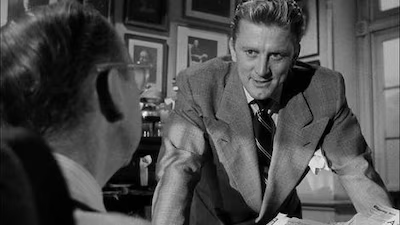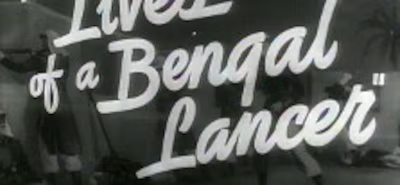Charles Lang Jr.

About
Biography
Filmography
Notes
During the course of his career Lang was nominated for the Best Cinematography Oscar 18 times, the first for "The Right to Love" (1930/31) and the last for "Butterflies Are Free" (1972).
Over the course of his career Lang was variously credited as "Charles Lang", "Charles B. Lang", "Charles Lang, Jr." and "Charles B. Lang, Jr." He is not to be confused with character actor Charles Lang (born 1915), busiest in the 1940s; writer Charles Lang, who scripted "Captain Scarface" (1953) and several TV series of the 1950s; the Charles Lang who worked as an electrician on "Star Trek VI: The Undiscovered Country" (1991) or even sound engineeer Charles B. Lang, long with Warner Brothers.
Biography
During a career that spanned over half a century, cinematographer Charles Lang worked with directors ranging from Dorothy Arzner ("Anybody's Woman" 1930) to George Cukor ("Zaza" 1939) to Anthony Mann ("The Man from Laramie" 1955) and Paul Mazursky ("Bob & Carol & Ted & Alice" 1969). One of the key talents responsible for the look of Paramount Studio's films during the 1930s and 40s, Lang helped establish the softer, romanticized side of the studio's ornate, glossy, vaguely European visual style. Some of Lang's best work features a supple use of camera movement and an atmospheric, translucent lighting which washes gently through interiors, most notably in such tender love stories and wispy light comedies as Frank Borzage's "A Farewell to Arms" (1932) and "Desire" (1936), Mitchell Leisen's "Cradle Song" (1933), Ernst Lubitsch's "Angel" (1937), and Henry Hathaway's stunning romantic fantasy, "Peter Ibbetson" (1935). Like most Hollywood cinematographers of the classical period, however, Lang worked in all genres, and his work included action epics ("Lives of a Bengal Lancer" 1935) as well as the more brittle, stinging comedy of such classics as Mae West's first starrer, "She Done Him Wrong" (1933) and Leisen's delightful "Midnight" (1939).
The latter film seems an appropriate transition to Lang's 40s style, which saw a deeper use of contrasts between light and darkness and a slightly sharper edge to some of the lighting effects. The delicate sensibility was still there as well, though, and the combination added a great deal to two "haunting" ghost dramas, "The Uninvited" (1944) and "The Ghost and Mrs. Muir" (1947), as well as to Billy Wilder's evocative portrait of postwar Berlin, "A Foreign Affair" (1948), with Marlene Dietrich crooning amidst blazes of light in smoky cafes.
Leaving Paramount in 1951, Lang showed that his talents could fit the moody, violent world of film noir when he collaborated with another Lang, Fritz, on the powerful crime classic, "The Big Heat" (1953). As color became increasingly prevalent in American film during the 50s Lang demonstrated a cool control of color tones in such films as "Gunfight at the O.K. Corral" (1957) and "Charade" (1963), while the muted color and deep focus cinematography were among the highlights of the offbeat, Marlon Brando-directed Western, "One-Eyed Jacks" (1961). Lang's work on Wilder's hilarious "Some Like It Hot" (1959) showed, however, that he had not forgotten how to evoke a bygone visual style in his work. He continued working until the early 70s ("Butterflies Are Free" 1972, "40 Carats" 1973), bequeathing to the cinema a rich, often poetic, legacy of visual artistry.
Filmography
Cast (Feature Film)
Cinematography (Feature Film)
Writer (Feature Film)
Sound (Feature Film)
Misc. Crew (Feature Film)
Sound (Short)
Life Events
1919
Left law school to work as an assistant in the laboratories of Realart Studios, where he father was a technician
1922
Realart Studios closed; did freelance work, including a stint as a still photographer for the Preferred Picture Corporation
1923
Worked as an assistant cameraman for Preferred's productions of "Are You a Failure?" And "The Virginian"
1925
Was put under contract at Paramount as a second cameraman(date approximate)
1926
Served as second cameraman on "The Night Patrol"
1927
First credit as cinematographer, "Ritzy"; disliked being first cameraman and returned to second-string work for a year
1941
Made first film in color, "The Shepherd of the Hills"
1951
Left Paramount; began free-lancing
1973
Last feature film, "40 Carats"
1992
Appeared in the documentary feature, "Visions of Light: The Art of Cinematography"
Videos
Movie Clip












Trailer












Family

Bibliography
Notes
During the course of his career Lang was nominated for the Best Cinematography Oscar 18 times, the first for "The Right to Love" (1930/31) and the last for "Butterflies Are Free" (1972).
Over the course of his career Lang was variously credited as "Charles Lang", "Charles B. Lang", "Charles Lang, Jr." and "Charles B. Lang, Jr." He is not to be confused with character actor Charles Lang (born 1915), busiest in the 1940s; writer Charles Lang, who scripted "Captain Scarface" (1953) and several TV series of the 1950s; the Charles Lang who worked as an electrician on "Star Trek VI: The Undiscovered Country" (1991) or even sound engineeer Charles B. Lang, long with Warner Brothers.











